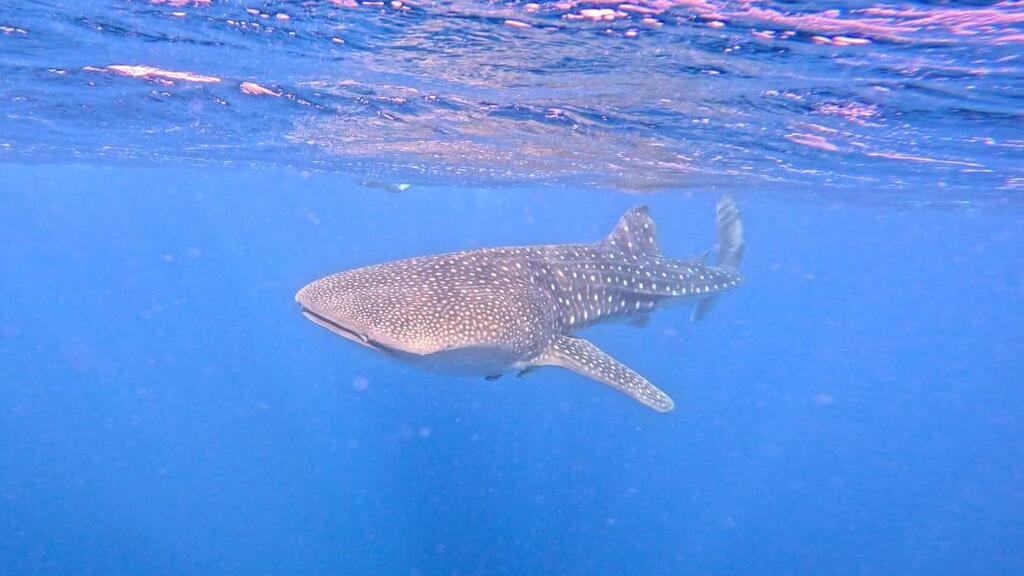The whale shark that was spotted near Eilat
(Video: Nature and Parks Authority Documented)
Over the weekend, a rare whale shark, approximately 9 meters long, was discovered in the Eilat Coral Beach Nature Reserve, as part of the marine surveillance tour by the maritime unit in the Eilat region. It was documented by Omri Omsi, the inspector of the Nature and Parks Authority.
Read more:
"This is a surprising sight," Omsi said. "The whale shark comes close to the shore from time to time in search of food. In such encounters, it is advisable to let it swim freely and not touch it. It is also forbidden to harm it with any means."
1 View gallery


The whale shark that was spotted near Eilat
(Photo: Nature and Parks Authority Documented)
The whale shark is the largest fish in the world and is not considered dangerous to humans. Whale sharks are protected in Israel and are classified globally as a species at risk of extinction. They are defined as a protected natural resource in the IUCN Red Book - the International Union for Conservation of Nature and Natural Resources, as a species at risk of extinction, meaning a significant risk of the species' extinction from nature.
The largest individual whale shark ever caught and accurately measured was 12.65 meters long and weighed over 21.5 tons. Claims about larger individual sharks that have been observed are not scientifically based. Despite its size, this shark is not considered dangerous to humans, and many divers follow it and even cling to it while moving. The whale shark is often seen in the Philippines, off the coast of Thailand, the Maldives, Western Australia, the Galapagos Islands, and even the Red Sea.
The whale shark is sometimes captured as part of commercial or hobby fishing, usually in places where it gathers. The population size is currently declining, and its conservation status is currently defined by the IUCN as a species at risk of extinction.
The species was first identified in April 1828, after an individual shark measuring 4.6 meters was caught using a seine in Table Bay, South Africa. Later, it was described in more detail by a zoologist named Andrew Smith, a military doctor attached to British soldiers stationed in Cape Town. He continued to study the species and published a more detailed description of the same individual shark in 1849.
The name of the fish, "whale shark," comes from its physiology – this fish is a shark whose size is like that of a whale, and it uses a feeding technique similar to that of the whale – filtering food from the water.



